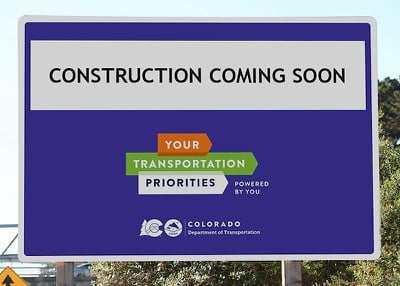Transparency & Accountability
Just as important as establishing a project pipeline is creating transparency and accountability structures that let the public see the progress on these projects and how dollars are being spent.
Increasing project transparency through public reporting on project management and project costs.
Residents deserve to know how the government is spending their tax dollars on projects. CDOT is rolling out new dashboards that show how each project is doing in terms of delivering on scope, schedule and budget. New reporting will also show the breakdown of project costs so the public can see where project dollars are going. These dashboards will go live in spring 2020, before the busy summer construction season begins.
Setting new spending targets to maximize dollars going to transportation improvements that people can see.
Projects require a range of expenses that include design and engineering, environmental review, right of way acquisition, and agency staffing — in addition to the dollars spent on construction contractors building the project. All of these elements are important for getting projects done, even though some are less visible to the public than others. In order to maximize dollars spent on putting shovels in the ground, CDOT has set new targets that limit design and engineering to 20% of project costs for larger projects, and 15% for smaller and simpler projects that require less intricate designs.

Clearly showing expenses that track multiple years.
Budgets for capital projects often span multiple years. Thus, a dollar “dedicated” to a project during one year may very well be spent during a later fiscal year — especially since CDOT’s fiscal year changes in the middle of construction season (starts July 1 and ends June 30 of the following year). CDOT’s new budget presentation makes it easier to track when dollars allocated during one year are carried over for actual drawdown during a subsequent year.
Spending every dollar as wisely as possible by cutting discretionary costs.
CDOT’s most recent budget reflects strong efforts to find efficiencies and focus on the highest priority and most critical functions. This effort included cutting administrative and travel costs and re-prioritizing technology investments.
Years 1-4 Highlights
Recent legislative funding enabled a range of projects around the state totaling $1.8 billion over a four year period.
Includes the largest investment in rural pavement in history.
Leverages other CDOT funding sources to accomplish large projects like rebuilding I-270 and the first phase of Floyd Hill on I-70.
Years 5-10 Highlights
This plan describes an additional $3.2 billion in needed investments and hundreds of additional projects.
Includes six years of projects, completing CDOT’s 10-year plan.
Projects were selected based on public input and prioritized by local government officials, transportation planning experts and CDOT.
